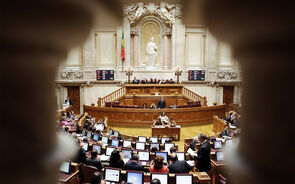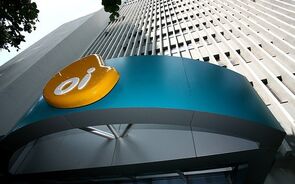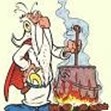Task a comparar 1990 com 2002
1 Mensagem
|Página 1 de 1
Task a comparar 1990 com 2002
Com a qualidade de sempre, Aaron Task estabelece um paralelismo entre os tempos da Guerra de 1990 e o que estamos a viver actualmente.
Ulisses
"The Gulf Between Then and Now"
By Aaron L. Task
Senior Writer
03/05/2003 06:57 AM EST
On the surface, it's dj vu all over again. A U.S. president named Bush is determined to punish Iraq's Saddam Hussein for flouting international law and general evil-doing. The economy is struggling, consumer confidence is falling, and there's widespread concern about the world's oil supplies.
Certainly, there are some similar patterns in the charts of major stock proxies. In both 1990 and 2002, equities tumbled in early October before reversing smartly higher. In both instances the rallies struggled several weeks later, as the inevitability of war approached.
Given that, the conventional wisdom is that when (and if) war breaks out with Iraq, the financial markets will react as they did after Desert Storm began on Jan. 19, 1991. In other words, stocks would rally sharply after an initial shock, while oil and gold prices would plummet after a short-lived spike.
But while similarities exist, there are significant differences between then and now, in equity valuations, sentiment and world politics, that could dictate a far different market response than in 1991.
Vive le Difference
Postbubble realities: The most glaring financial difference between 1990-91 and today is that the first Gulf War did not follow one of the greatest manias in financial markets' history, to which the '80s excess paled in comparison.
"We just suffered the biggest mania of all time," said Alan Newman, the oft-bearish editor of CrossCurrents. The 1990s bubble was "worse than the 'Roaring '20s', 'tulip mania', and the South Sea Bubble."
The scope of the mania was so great that equity valuations remain stretched, even three years after the bubble burst.
On a price-to-earnings basis, the S&P 500 is currently trading at 16 times First Call's consensus operating estimates for 2003, after trading as high as 27 and as low as 16 in 2002. In 1990, the S&P 500's P/E ranged from 12 to 16, according to Baseline.
However, both operating results and estimates thereof have proven to be highly unreliable in recent years, as loose accounting practices and overzealous analysts were lamentable elements of the bubble. On the basis of consensus expectations for 2003 reported earnings, which exclude only those "extraordinary items" defined by generally accepted accounting principles, the S&P's P/E rises to 21.9.
Richard Bernstein, chief strategist at Merrill Lynch, further observed that the S&P's P/E-to-growth ratio was about 1.4 at the end of 1990 vs. about 2.5 today, which is "still above any prior peak in any cycle." The PEG ratio is the best valuation measure, Bernstein suggested, because it can "normalize" anomalies in P/Es caused by depressed earnings during recessions.
Other valuation measures, including price-to-book, price-to-sales and dividend yields remain well above 1990-91 levels, and are also much higher than at any other major bear market bottom.
About the only valuation argument working in stocks' favor these days is their relative attractiveness vs. Treasuries. But to date, a long-standing "undervalued" reading from the so-called Fed Model has resulted in little appreciable benefit for shares.
Sentiment also was inexorably altered during the 1990s.
"Portfolio managers continue to think there is more risk being out of the market vs. being in the market," Bernstein said. Cash holdings of domestic mutual funds totaled 9.7% of assets in January 1991 (and more than 12% in November 1990) vs. 4.4% in January 2003, according to the Investment Company Institute.
Additionally, Bernstein observed that the average Wall Street strategist recommended under 50% allocation in stocks in late 1990 vs. about 65% currently.
In early 1991, Americans warily braced for combat with Iraq's then highly regarded military. Today, it's almost uniformly assumed any war with Iraq will be quick and relatively easy. Therefore, many traders expect stocks will rally immediately after the conflict starts, as happened in 1991.
"Back in 1990, early 1991, there was so much apprehension about what was going to happen that everything had been discounted," Newman recalled. "Here it's the total opposite. We're in an apparent 'no lose' scenario -- buy the war, and if it doesn't occur, that's bullish, too. It's nuts."
Chartcraft's Investors Intelligence survey was "a great deal more pessimistic" than current readings of about 40% bulls to 36% bears, he added. From October 1990 trough January 1991, bearish sentiment ranged between 55.8% and 43.5%, according to Chartcraft, consistently outstripping bullishness of 42.6% to 30.8% in the same period.
Richard Dickson of Lowry's Reports offered another difference between the eras, as reported last month: There was a series of so-called 90% downside days in October 1990 -- a sign of real fear and capitulation -- vs. zero such sessions thus far in the current cycle.
Other Areas, More Differences
Differences in other markets include:
Oil prices peaked in October 1990 and were actually trending downward when Desert Storm began (although they briefly spiked higher when the fighting started). In the current cycle, oil prices rose steadily through the fourth quarter and peaked -- to date -- in late February at just below $40 per barrel.
Many factors explain the discrepancy, including the near-shuttering of Venezuelan production. But "the biggest difference is in 1990, when Iraq and Kuwait went out of commission, Saudi Arabia stepped up production" and made up the shortfall by October, recalled Fadel Gheit, energy analyst at Fahnestock. Currently, the Saudis already are producing at close to maximum capacity. "That's why crude oil prices are stuck in the mid-$30s," Gheit said.
In addition, crude inventories are very low today, and expectations are for a short war, a "mirror opposite" of early 1991, according to Merrill's Bernstein.
The economy was in full-blown recession in late 1990, the fed funds rate was well above the inflation rate, and then-President Bush had just signed a tax increase to tackle the deficit, recalled Dana Johnson, head of capital markets research at Banc One Capital Markets. "I see a very different set of circumstances today -- the economy is much better balanced, there's more monetary stimulus in place and more fiscal stimulus likely."
Like most economists, Johnson believes the economy is poised to grow robustly once the Iraq situation is resolved. Given that, he sees "considerable potential for [Treasury] yields to be a lot higher over next 12 months."
On the downside, the Federal Reserve has far less rate-cutting arrows in its quiver today vs. 1990-91, although the central bank has other options at its disposal to combat another (unforeseen) economic downturn.
When Desert Storm was launched, the dollar was not viewed as nearly the safe haven it became in the late 1990s. In the early 1990s, the U.S. was still dealing with the S&L crisis while Europe was "in a frenzy" following the dismantling of the Berlin Wall in 1989, recalled Lisa Finstrom, senior currency analyst at Salomon Smith Barney. Meanwhile, Japan was still viewed as an economic juggernaut vs. its current state of prolonged stagnation.
Given the greenback's current stature, "if we can get through this bout of uncertainty, our economists feel the [economy's] underlying resilience will carry the day, which should help the dollar," Finstrom said. However, any rebound might be muted, as "the appetite for U.S. assets [was] satiated" in the 1990s bubble, she warned.
New World Disorder
Of course, the most glaring difference between today and 1990-91 is the threat of more terrorist attacks, as Tuesday's bombing in a Philippines airport demonstrated.
Compounding that threat, the seemingly tightly knit allied coalition that took on Saddam Hussein in 1991 has become fractured. In the run-up to another war, much of the world sees America as overreaching, even imperialistic, a perhaps inevitable outcome of the U.S.' unprecedented strength and lone superpower status. And where Saudi Arabia and Kuwait paid for more than 80% of Desert Storm, the U.S. is going to have to pick up the tab this time around, even as we face rising budget deficits and other external threats such as the one from North Korea.
A list of geopolitical differences between today and 1990-91 could go on indefinitely, making one wonder why so much attention is focused on the scant few similarities.
Ulisses
"The Gulf Between Then and Now"
By Aaron L. Task
Senior Writer
03/05/2003 06:57 AM EST
On the surface, it's dj vu all over again. A U.S. president named Bush is determined to punish Iraq's Saddam Hussein for flouting international law and general evil-doing. The economy is struggling, consumer confidence is falling, and there's widespread concern about the world's oil supplies.
Certainly, there are some similar patterns in the charts of major stock proxies. In both 1990 and 2002, equities tumbled in early October before reversing smartly higher. In both instances the rallies struggled several weeks later, as the inevitability of war approached.
Given that, the conventional wisdom is that when (and if) war breaks out with Iraq, the financial markets will react as they did after Desert Storm began on Jan. 19, 1991. In other words, stocks would rally sharply after an initial shock, while oil and gold prices would plummet after a short-lived spike.
But while similarities exist, there are significant differences between then and now, in equity valuations, sentiment and world politics, that could dictate a far different market response than in 1991.
Vive le Difference
Postbubble realities: The most glaring financial difference between 1990-91 and today is that the first Gulf War did not follow one of the greatest manias in financial markets' history, to which the '80s excess paled in comparison.
"We just suffered the biggest mania of all time," said Alan Newman, the oft-bearish editor of CrossCurrents. The 1990s bubble was "worse than the 'Roaring '20s', 'tulip mania', and the South Sea Bubble."
The scope of the mania was so great that equity valuations remain stretched, even three years after the bubble burst.
On a price-to-earnings basis, the S&P 500 is currently trading at 16 times First Call's consensus operating estimates for 2003, after trading as high as 27 and as low as 16 in 2002. In 1990, the S&P 500's P/E ranged from 12 to 16, according to Baseline.
However, both operating results and estimates thereof have proven to be highly unreliable in recent years, as loose accounting practices and overzealous analysts were lamentable elements of the bubble. On the basis of consensus expectations for 2003 reported earnings, which exclude only those "extraordinary items" defined by generally accepted accounting principles, the S&P's P/E rises to 21.9.
Richard Bernstein, chief strategist at Merrill Lynch, further observed that the S&P's P/E-to-growth ratio was about 1.4 at the end of 1990 vs. about 2.5 today, which is "still above any prior peak in any cycle." The PEG ratio is the best valuation measure, Bernstein suggested, because it can "normalize" anomalies in P/Es caused by depressed earnings during recessions.
Other valuation measures, including price-to-book, price-to-sales and dividend yields remain well above 1990-91 levels, and are also much higher than at any other major bear market bottom.
About the only valuation argument working in stocks' favor these days is their relative attractiveness vs. Treasuries. But to date, a long-standing "undervalued" reading from the so-called Fed Model has resulted in little appreciable benefit for shares.
Sentiment also was inexorably altered during the 1990s.
"Portfolio managers continue to think there is more risk being out of the market vs. being in the market," Bernstein said. Cash holdings of domestic mutual funds totaled 9.7% of assets in January 1991 (and more than 12% in November 1990) vs. 4.4% in January 2003, according to the Investment Company Institute.
Additionally, Bernstein observed that the average Wall Street strategist recommended under 50% allocation in stocks in late 1990 vs. about 65% currently.
In early 1991, Americans warily braced for combat with Iraq's then highly regarded military. Today, it's almost uniformly assumed any war with Iraq will be quick and relatively easy. Therefore, many traders expect stocks will rally immediately after the conflict starts, as happened in 1991.
"Back in 1990, early 1991, there was so much apprehension about what was going to happen that everything had been discounted," Newman recalled. "Here it's the total opposite. We're in an apparent 'no lose' scenario -- buy the war, and if it doesn't occur, that's bullish, too. It's nuts."
Chartcraft's Investors Intelligence survey was "a great deal more pessimistic" than current readings of about 40% bulls to 36% bears, he added. From October 1990 trough January 1991, bearish sentiment ranged between 55.8% and 43.5%, according to Chartcraft, consistently outstripping bullishness of 42.6% to 30.8% in the same period.
Richard Dickson of Lowry's Reports offered another difference between the eras, as reported last month: There was a series of so-called 90% downside days in October 1990 -- a sign of real fear and capitulation -- vs. zero such sessions thus far in the current cycle.
Other Areas, More Differences
Differences in other markets include:
Oil prices peaked in October 1990 and were actually trending downward when Desert Storm began (although they briefly spiked higher when the fighting started). In the current cycle, oil prices rose steadily through the fourth quarter and peaked -- to date -- in late February at just below $40 per barrel.
Many factors explain the discrepancy, including the near-shuttering of Venezuelan production. But "the biggest difference is in 1990, when Iraq and Kuwait went out of commission, Saudi Arabia stepped up production" and made up the shortfall by October, recalled Fadel Gheit, energy analyst at Fahnestock. Currently, the Saudis already are producing at close to maximum capacity. "That's why crude oil prices are stuck in the mid-$30s," Gheit said.
In addition, crude inventories are very low today, and expectations are for a short war, a "mirror opposite" of early 1991, according to Merrill's Bernstein.
The economy was in full-blown recession in late 1990, the fed funds rate was well above the inflation rate, and then-President Bush had just signed a tax increase to tackle the deficit, recalled Dana Johnson, head of capital markets research at Banc One Capital Markets. "I see a very different set of circumstances today -- the economy is much better balanced, there's more monetary stimulus in place and more fiscal stimulus likely."
Like most economists, Johnson believes the economy is poised to grow robustly once the Iraq situation is resolved. Given that, he sees "considerable potential for [Treasury] yields to be a lot higher over next 12 months."
On the downside, the Federal Reserve has far less rate-cutting arrows in its quiver today vs. 1990-91, although the central bank has other options at its disposal to combat another (unforeseen) economic downturn.
When Desert Storm was launched, the dollar was not viewed as nearly the safe haven it became in the late 1990s. In the early 1990s, the U.S. was still dealing with the S&L crisis while Europe was "in a frenzy" following the dismantling of the Berlin Wall in 1989, recalled Lisa Finstrom, senior currency analyst at Salomon Smith Barney. Meanwhile, Japan was still viewed as an economic juggernaut vs. its current state of prolonged stagnation.
Given the greenback's current stature, "if we can get through this bout of uncertainty, our economists feel the [economy's] underlying resilience will carry the day, which should help the dollar," Finstrom said. However, any rebound might be muted, as "the appetite for U.S. assets [was] satiated" in the 1990s bubble, she warned.
New World Disorder
Of course, the most glaring difference between today and 1990-91 is the threat of more terrorist attacks, as Tuesday's bombing in a Philippines airport demonstrated.
Compounding that threat, the seemingly tightly knit allied coalition that took on Saddam Hussein in 1991 has become fractured. In the run-up to another war, much of the world sees America as overreaching, even imperialistic, a perhaps inevitable outcome of the U.S.' unprecedented strength and lone superpower status. And where Saudi Arabia and Kuwait paid for more than 80% of Desert Storm, the U.S. is going to have to pick up the tab this time around, even as we face rising budget deficits and other external threats such as the one from North Korea.
A list of geopolitical differences between today and 1990-91 could go on indefinitely, making one wonder why so much attention is focused on the scant few similarities.
1 Mensagem
|Página 1 de 1



